Zaph|Audio
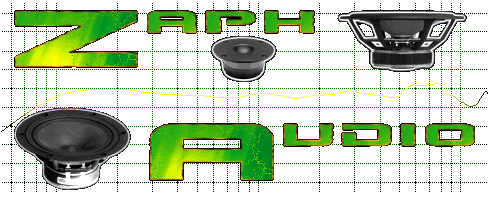
Archives
Designs shown on this page are not available unless otherwise specified.
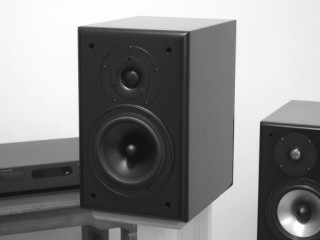 Hi-Vi W5 / Vifa D27S system. Specifically designed as a L/C/R system with decent horizontal lobing when laid on it's side for a center channel. The crossover point was very low and the system was a study of how hard this chamberless tweeter could be pushed without distortion becoming objectionable. The D27 is no longer available, and the value for the system was not quite where it needed to be, at least when the woofer isn't on sale.
Hi-Vi W5 / Vifa D27S system. Specifically designed as a L/C/R system with decent horizontal lobing when laid on it's side for a center channel. The crossover point was very low and the system was a study of how hard this chamberless tweeter could be pushed without distortion becoming objectionable. The D27 is no longer available, and the value for the system was not quite where it needed to be, at least when the woofer isn't on sale.
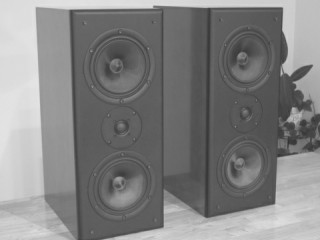 Vifa XG18 / Seas 27TDFC MTM. This system had a very clean midrange and so-so bass capability. The response was somewhat optimized to reduce the typical power response faults and a lot of thought was put into the typical limitations of a MTM with 7" woofers. The XG18 is no longer available.
Vifa XG18 / Seas 27TDFC MTM. This system had a very clean midrange and so-so bass capability. The response was somewhat optimized to reduce the typical power response faults and a lot of thought was put into the typical limitations of a MTM with 7" woofers. The XG18 is no longer available.
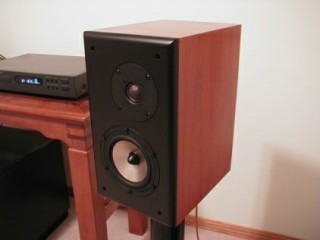 Seas L15 / 27TFFC system. Nice sounding small 2-way 5" system with surprising bass output and depth for a speaker of this size. The drivers are still available, but it's fallen below the value/performance ratio that I require. As of this writing, the L15 woofers are $75 each. Right now there are better 2-way 5" options for less money. See the ZMV5 for a better sounding and cheaper design.
Seas L15 / 27TFFC system. Nice sounding small 2-way 5" system with surprising bass output and depth for a speaker of this size. The drivers are still available, but it's fallen below the value/performance ratio that I require. As of this writing, the L15 woofers are $75 each. Right now there are better 2-way 5" options for less money. See the ZMV5 for a better sounding and cheaper design.
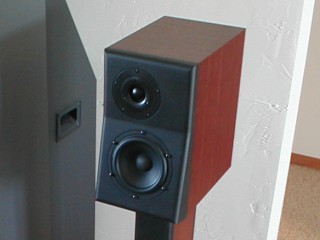 Silver Flute / Vifa system. Formerly a popular high value system. The cost of Silver Flute drivers has crept up from the original $14 each over the years. The Vifa D27 tweeter is out of production. I feel I could have done a better job with design choices. It did sound good but it could have sounded better. All this combines to help me make the decision to pull the design. It's lived it's life and it's time to work on something better. See the ZMV5 for a better sounding and cheaper design.
Silver Flute / Vifa system. Formerly a popular high value system. The cost of Silver Flute drivers has crept up from the original $14 each over the years. The Vifa D27 tweeter is out of production. I feel I could have done a better job with design choices. It did sound good but it could have sounded better. All this combines to help me make the decision to pull the design. It's lived it's life and it's time to work on something better. See the ZMV5 for a better sounding and cheaper design.
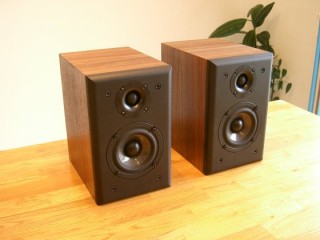 Audax Mini. A small sealed system with a 4" aerogel woofer and a neo tweeter. It sounded great, but was unfortunately pulled due to non-availability of the drivers. Audax dropped out of the DIY market. Aside from it's flaws of extremely low sensitivity, low power handling and relatively expensive drivers, this was a damn good sounding little system. It was recently replaced by the "Bargain Mini" on the main page, which is generally an all-around better performer for less money.
Audax Mini. A small sealed system with a 4" aerogel woofer and a neo tweeter. It sounded great, but was unfortunately pulled due to non-availability of the drivers. Audax dropped out of the DIY market. Aside from it's flaws of extremely low sensitivity, low power handling and relatively expensive drivers, this was a damn good sounding little system. It was recently replaced by the "Bargain Mini" on the main page, which is generally an all-around better performer for less money.
This design is available here.
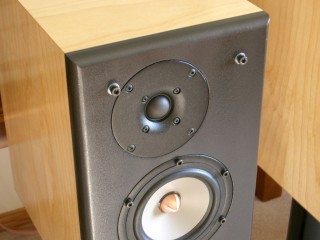 Seas Excel W15CY-001 / T25CF-001 2-way. This was one of the best sounding 5" 2-ways I've designed. Smooth and clean midrange and high end. Drivers are a little pricey however. I could not post the design for public use because there have been several versions of the W15 with the breakup node at different frequencies. Someday I may revisit the design with current versions of the drivers.
Seas Excel W15CY-001 / T25CF-001 2-way. This was one of the best sounding 5" 2-ways I've designed. Smooth and clean midrange and high end. Drivers are a little pricey however. I could not post the design for public use because there have been several versions of the W15 with the breakup node at different frequencies. Someday I may revisit the design with current versions of the drivers.
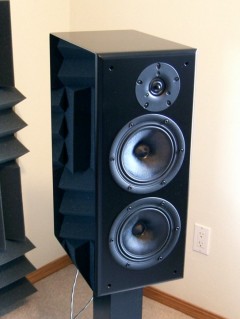 Vifa XG18 / XT25 2.5-way TMM design. This design had the most incredible midrange and high end I've heard. Unfortunately, I've come to the conclusion that the 2-way XG18/27TDFC MTM design sounds better. There's one primary reason for this: A 2.5 way TMM by nature is a full baffle step design, and the low end distortion profiles of the XT/XG series of woofers are not suitable for full baffle step compensation. It took a little listening to confirm this. The 2-way MTM layout has only about 4 dB of BSC however, offering a better tonal balance when used full range.
Vifa XG18 / XT25 2.5-way TMM design. This design had the most incredible midrange and high end I've heard. Unfortunately, I've come to the conclusion that the 2-way XG18/27TDFC MTM design sounds better. There's one primary reason for this: A 2.5 way TMM by nature is a full baffle step design, and the low end distortion profiles of the XT/XG series of woofers are not suitable for full baffle step compensation. It took a little listening to confirm this. The 2-way MTM layout has only about 4 dB of BSC however, offering a better tonal balance when used full range.
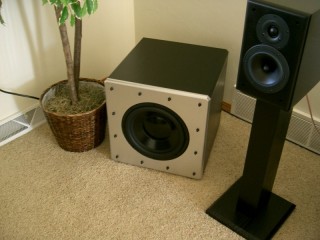 Dayton RSS315HF subwoofer with 500 watt amp. A very nice sounding sub for a reasonable price. The Dayton Reference Series subwoofers are incredible performers. It's obvious these drivers take direct aim at the Peerless XLS series, with similar performance and output levels, but the daytons do it for a lot less money.
Dayton RSS315HF subwoofer with 500 watt amp. A very nice sounding sub for a reasonable price. The Dayton Reference Series subwoofers are incredible performers. It's obvious these drivers take direct aim at the Peerless XLS series, with similar performance and output levels, but the daytons do it for a lot less money.
This design is available here.
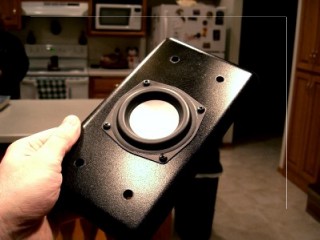 Aura NS3-193 full range. This driver performed very well in a test of multiple 3" drivers. I used it in the same box I have my current Hi-Vi B3S design in. of the test group, it had the best bass depth and output.
Aura NS3-193 full range. This driver performed very well in a test of multiple 3" drivers. I used it in the same box I have my current Hi-Vi B3S design in. of the test group, it had the best bass depth and output.
This design is available here.
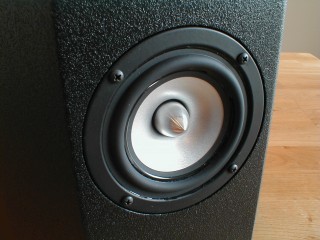 Notch filter for Tangband W3-871. A very popular speaker system, likely because of 2 key design factors: cheap and simple. Hundreds of these have been built, but the design has recently been replaced by the HiVi B3S system shown elsewhere on this web site.
Notch filter for Tangband W3-871. A very popular speaker system, likely because of 2 key design factors: cheap and simple. Hundreds of these have been built, but the design has recently been replaced by the HiVi B3S system shown elsewhere on this web site.
 Seas Mini - L12 and 25TFFC. Great sounding tiny speaker. These two drivers were originally going to be the top half of a unique 3-way system, but that disolved after I screwed up the enclosures pretty bad. The L12 is a driver of similar quality to the rest of the L series. The 25TFFC is also a great sounding, smooth tweeter that is easy to cross over. This design was the third one I did using my universal Mini Enclosures. The woofer was too expensive for average performance however, and this design never made it onto the web site.
Seas Mini - L12 and 25TFFC. Great sounding tiny speaker. These two drivers were originally going to be the top half of a unique 3-way system, but that disolved after I screwed up the enclosures pretty bad. The L12 is a driver of similar quality to the rest of the L series. The 25TFFC is also a great sounding, smooth tweeter that is easy to cross over. This design was the third one I did using my universal Mini Enclosures. The woofer was too expensive for average performance however, and this design never made it onto the web site.
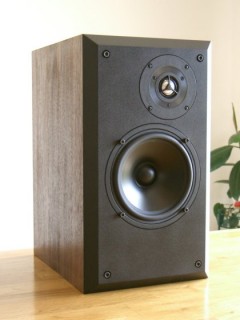 Vifa P17WJ-00-08 and D25AG-35-06 - A Study in Driver Consistency. The Vifa P17 and D25 are among the most popular DIY drivers ever created. There are many, many designs out there that use these drivers. I've collected and modeled a whole load of them. I created the perfect crossover for the drivers I had on hand, but with the help of some of the other DIY designers, some consistency issues were revealed. Both the P17 and the D25 have various versions out there... and that means some crossovers work and some don't. This sucks for people who would like to build someone else's design because there is a good chance it won't work well. Folks, avoid these drivers unless you have the ability to measure and model them yourself. And even then, the drivers are nothing special and there are better options out there.
Vifa P17WJ-00-08 and D25AG-35-06 - A Study in Driver Consistency. The Vifa P17 and D25 are among the most popular DIY drivers ever created. There are many, many designs out there that use these drivers. I've collected and modeled a whole load of them. I created the perfect crossover for the drivers I had on hand, but with the help of some of the other DIY designers, some consistency issues were revealed. Both the P17 and the D25 have various versions out there... and that means some crossovers work and some don't. This sucks for people who would like to build someone else's design because there is a good chance it won't work well. Folks, avoid these drivers unless you have the ability to measure and model them yourself. And even then, the drivers are nothing special and there are better options out there.
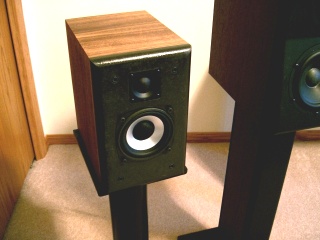 Cheap Mini-mite - Using an 4" MCM 55-1853 aluminum woofer and a Peerless 811435. Great sounding, shielded and super cheap. A set of 5 at the time would cost $180 for drivers and crossover parts, and run circles around any commercial HT design costing 5 times more for 5 speakers. I may revisit this design some day, but for now the enclosure is being used by other designs. The enclosure reflects my cabinet building technique of removable baffles to make enclosures resuable for many designs. In recent months I've been doing this more to save time on the many designs I work on, but it's something I've starting doing long before Parts Express started selling their "B-REX" enclosures. The project was resurected using a cheaper but better tweeter.
Cheap Mini-mite - Using an 4" MCM 55-1853 aluminum woofer and a Peerless 811435. Great sounding, shielded and super cheap. A set of 5 at the time would cost $180 for drivers and crossover parts, and run circles around any commercial HT design costing 5 times more for 5 speakers. I may revisit this design some day, but for now the enclosure is being used by other designs. The enclosure reflects my cabinet building technique of removable baffles to make enclosures resuable for many designs. In recent months I've been doing this more to save time on the many designs I work on, but it's something I've starting doing long before Parts Express started selling their "B-REX" enclosures. The project was resurected using a cheaper but better tweeter.
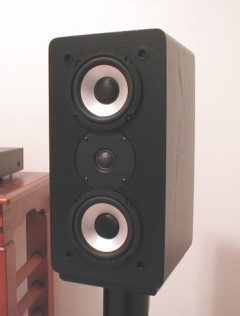 Inexpensive Mini MTM - Using a pair of MCM 55-1855 aluminum woofers and a Seas 27TFFC. These woofers are one of the all-time great values at $13 each. They required a low crossover point due to an early rolloff, which in turn required a tweeter with the ability to cross over low. Aside from that, these woofers are well behaved and sounded excellent at low to medium volumes. The response curve was almost a straight line, but intentionally tilted down a few db across the top 4 octaves. This gave a smooth, warm relaxing sound, particularly in larger or reflective rooms.
Inexpensive Mini MTM - Using a pair of MCM 55-1855 aluminum woofers and a Seas 27TFFC. These woofers are one of the all-time great values at $13 each. They required a low crossover point due to an early rolloff, which in turn required a tweeter with the ability to cross over low. Aside from that, these woofers are well behaved and sounded excellent at low to medium volumes. The response curve was almost a straight line, but intentionally tilted down a few db across the top 4 octaves. This gave a smooth, warm relaxing sound, particularly in larger or reflective rooms.
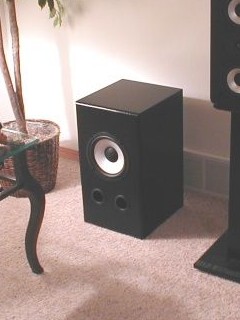 Cheap 8 Inch Subwoofer - using the great MCM 55-2185 aluminum DVC driver. What a great driver for around $20. It had a large vented magnet structure and great build quality. It lacked high output but it did go deep and sound clean. It used a non-standard extended bass shelf alignment and electronic boost combo to extend response while box size small. The plate amp was the Parts Express 150 watt, with the 5db boost factored into the box response to compensate for a tuning that was lower. F3 was about 30hz and response was flat to wherever I set the crossover. The project was pulled however because an 8" woofer with only 4mm Xmax simply isn't enough for most people, even for low level listening.
Cheap 8 Inch Subwoofer - using the great MCM 55-2185 aluminum DVC driver. What a great driver for around $20. It had a large vented magnet structure and great build quality. It lacked high output but it did go deep and sound clean. It used a non-standard extended bass shelf alignment and electronic boost combo to extend response while box size small. The plate amp was the Parts Express 150 watt, with the 5db boost factored into the box response to compensate for a tuning that was lower. F3 was about 30hz and response was flat to wherever I set the crossover. The project was pulled however because an 8" woofer with only 4mm Xmax simply isn't enough for most people, even for low level listening.
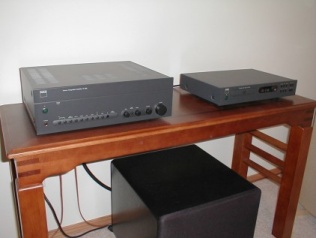 One from the useless web pages dept - Rah Rah for NAD components. At one time I actually had a web page celebrating the value and performance of NAD components. I no longer believe they are the best performing products for the money, though at one time they represented the corner point in the chart of performance per dollar. Prices on new NAD equipment have crept up too high, though Ebay is ripe with decent deals on classic NAD amps.
One from the useless web pages dept - Rah Rah for NAD components. At one time I actually had a web page celebrating the value and performance of NAD components. I no longer believe they are the best performing products for the money, though at one time they represented the corner point in the chart of performance per dollar. Prices on new NAD equipment have crept up too high, though Ebay is ripe with decent deals on classic NAD amps.
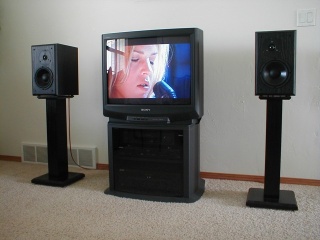 The Parts Express BR-1 - I had a web page reviewing the product and offering some modification suggestions. I can sum it up in one sentence. An ok cheap woofer, a decent crossover that makes the best of shoddy drivers, and a tweeter that's not that great. I suppose it's not too bad for a $12 tweeter, but I wouldn't pay a dime over $10 for it. People on the PE forum rave about this tweeter... tough to listen to people rave about a crappy driver, heh. Still, all things considered, this speakers beats anything you could get at best buy for $140 a pair.
The Parts Express BR-1 - I had a web page reviewing the product and offering some modification suggestions. I can sum it up in one sentence. An ok cheap woofer, a decent crossover that makes the best of shoddy drivers, and a tweeter that's not that great. I suppose it's not too bad for a $12 tweeter, but I wouldn't pay a dime over $10 for it. People on the PE forum rave about this tweeter... tough to listen to people rave about a crappy driver, heh. Still, all things considered, this speakers beats anything you could get at best buy for $140 a pair.
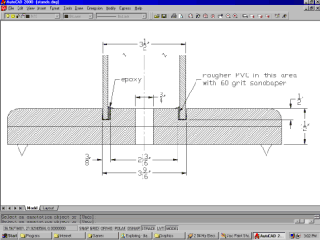 Another from the useless web pages dept - At one point I actually had a web page describing how to build some speaker stands. Folks, if you can't figure out how to make a speaker stand of some kind on your own, stay the hell away from power tools because you're going to hurt yourself.
Another from the useless web pages dept - At one point I actually had a web page describing how to build some speaker stands. Folks, if you can't figure out how to make a speaker stand of some kind on your own, stay the hell away from power tools because you're going to hurt yourself.
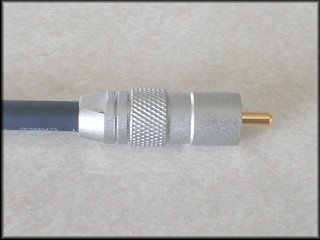 High Performance DIY Interconnects - formerly the most popular page on this web site. It had to come down because it's mere existance made people think that I placed a lot of importance on interconnects. I don't, and people need to realize that the weakest link in a system is always going to be the loudspeaker. Most people, if blindfolded, could not tell the difference between Rat Shack interconnects and ridiculously priced esoteric interconnects. That's probably why so many "cable experts" object to double blind testing. The performance of cables can be broken down into R, L, C, and in some cases RF shielding. That's it. "Cable experts" crack me up when they try to make it more complicated than that. The parts were available at MCM.
High Performance DIY Interconnects - formerly the most popular page on this web site. It had to come down because it's mere existance made people think that I placed a lot of importance on interconnects. I don't, and people need to realize that the weakest link in a system is always going to be the loudspeaker. Most people, if blindfolded, could not tell the difference between Rat Shack interconnects and ridiculously priced esoteric interconnects. That's probably why so many "cable experts" object to double blind testing. The performance of cables can be broken down into R, L, C, and in some cases RF shielding. That's it. "Cable experts" crack me up when they try to make it more complicated than that. The parts were available at MCM.
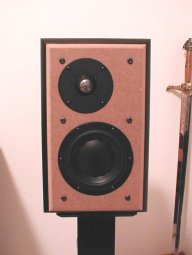 This system uses a Dynaudio 15W75 with a new Seas 27TBCG tweeter. The woofer was a sale item from Madisound. When they went on sale for $60 each, there was a mad rush to buy them and several hundred were gone in a few days. The tweeters were great but these woofers turned out to have a problematic response curve that required two notches to smooth out. I finally did get a smooth response, but the crossover had an excessively large number of components in it. I decided to move on to a better woofer, and the result of that is the Seas L15 system documented elsewhere.
This system uses a Dynaudio 15W75 with a new Seas 27TBCG tweeter. The woofer was a sale item from Madisound. When they went on sale for $60 each, there was a mad rush to buy them and several hundred were gone in a few days. The tweeters were great but these woofers turned out to have a problematic response curve that required two notches to smooth out. I finally did get a smooth response, but the crossover had an excessively large number of components in it. I decided to move on to a better woofer, and the result of that is the Seas L15 system documented elsewhere.
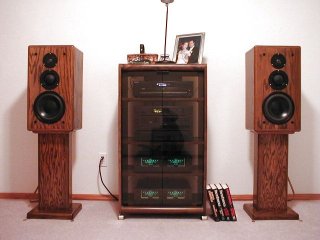 For about 6 years, my reference system was this 3 way Dynaudio with a 24W100, D76 mid and a D28 dome. This was also known as the "Xenon 3" kit from Madisound. I used it often as a standard of comparison. I got rid of that speaker when I started making better sounding speakers at a fraction of the cost as my design skills improved. This was probably the most money I ever spent on a speaker in raw form. In hindsight, it goes to show that the cost of the drivers plays only a small part in the overall sound.
For about 6 years, my reference system was this 3 way Dynaudio with a 24W100, D76 mid and a D28 dome. This was also known as the "Xenon 3" kit from Madisound. I used it often as a standard of comparison. I got rid of that speaker when I started making better sounding speakers at a fraction of the cost as my design skills improved. This was probably the most money I ever spent on a speaker in raw form. In hindsight, it goes to show that the cost of the drivers plays only a small part in the overall sound.
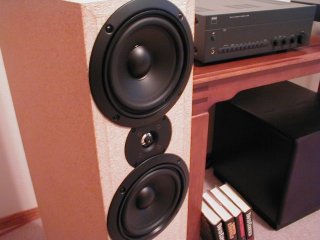 This is a pair of MTM's that sounded incredible and only cost about $60 per pair. The woofer was a discounted MCM 55-2225 poly-mica cone for $7 each, and the tweeter was a buyout aluminum dome from Definitive Technology for $9 each. I was shocked how good this system sounded for how little it cost. Keep an eye on those sale pages and email flyers, folks. You may find a diamond in the rough.
This is a pair of MTM's that sounded incredible and only cost about $60 per pair. The woofer was a discounted MCM 55-2225 poly-mica cone for $7 each, and the tweeter was a buyout aluminum dome from Definitive Technology for $9 each. I was shocked how good this system sounded for how little it cost. Keep an eye on those sale pages and email flyers, folks. You may find a diamond in the rough.
 This is the system I had in my truck for a while. It had 2 Denon amps with a crossover and Audio Control EQL half octave equalizer on the inside. The "sub" woofers were 6.5" MCM aluminum cones. Obviously, it was a system not for high spl. I definitely didn't waste any space behind the seat. The box was made of over 30 pieces to fit every nook and cranny.
This is the system I had in my truck for a while. It had 2 Denon amps with a crossover and Audio Control EQL half octave equalizer on the inside. The "sub" woofers were 6.5" MCM aluminum cones. Obviously, it was a system not for high spl. I definitely didn't waste any space behind the seat. The box was made of over 30 pieces to fit every nook and cranny.
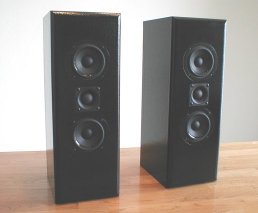 This is a miniature desktop MTM using Tangband W3-319 woofers and a Peerless 811435 tweeter. It was 16" tall. It sounded great but it was scrapped for a single driver full range system with a much simpler crossover. The Tangband W3-319 was my favorite fullrange driver until the W3-871 came out.
This is a miniature desktop MTM using Tangband W3-319 woofers and a Peerless 811435 tweeter. It was 16" tall. It sounded great but it was scrapped for a single driver full range system with a much simpler crossover. The Tangband W3-319 was my favorite fullrange driver until the W3-871 came out.
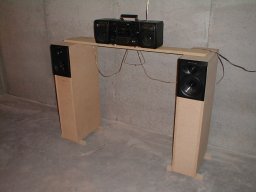 What do you do with a commercial speaker system using decent drivers but with a poor crossover and a boomy box Qtc of 1.5? Put them in a much larger box and redesign the crossover. It worked, and these former Wharfedale bookshelf speakers sounded incredible as large box tower speakers. Then you put it in the basement and hook it up to a $50 boom box. :)
What do you do with a commercial speaker system using decent drivers but with a poor crossover and a boomy box Qtc of 1.5? Put them in a much larger box and redesign the crossover. It worked, and these former Wharfedale bookshelf speakers sounded incredible as large box tower speakers. Then you put it in the basement and hook it up to a $50 boom box. :)
 I actually bought some Bose woofers once. They were a buyout for $6 each, and I think the passive radiators were about $4 each. The specs worked out great for a bandpass enclosure with deep response. These woofers were originally in a bandpass system of one of their larger floor standing systems. The system F3 was around 38hz. Not bad for a speaker taking up lass than a cubic foot.
I actually bought some Bose woofers once. They were a buyout for $6 each, and I think the passive radiators were about $4 each. The specs worked out great for a bandpass enclosure with deep response. These woofers were originally in a bandpass system of one of their larger floor standing systems. The system F3 was around 38hz. Not bad for a speaker taking up lass than a cubic foot.
 This one is digging real deep in the achives. I think it's from about 20 years ago. At the time, I lucked out with the design and it really worked well. All my designs were based on luck back then. It really got me thinking "My god I can't believe I built this and it sounds this good". It was a MTM using Vifa 6.5" woofers and a 10" passive radiator. The tweeter was an Audax titanium coated polymer dome with a rear chamber. The passive started out as a cheap 10" woofer, which I knocked the magnet off and added weight to the cone as required. The drivers were all well behaved, and the crossover was simple. These speakers were given to my mom, and I still enjoy listening to them once in a while when I go over there.
This one is digging real deep in the achives. I think it's from about 20 years ago. At the time, I lucked out with the design and it really worked well. All my designs were based on luck back then. It really got me thinking "My god I can't believe I built this and it sounds this good". It was a MTM using Vifa 6.5" woofers and a 10" passive radiator. The tweeter was an Audax titanium coated polymer dome with a rear chamber. The passive started out as a cheap 10" woofer, which I knocked the magnet off and added weight to the cone as required. The drivers were all well behaved, and the crossover was simple. These speakers were given to my mom, and I still enjoy listening to them once in a while when I go over there.
I wish I had a picture of this stuff...
I wish I had the speaker I built when I was 16. I found a full range driver in someone's garbage, I took it home and made the amazing discovery that speakers sound better when placed in enclosures. In this case, my enclosure was a 5 quart ice cream bucket. :)
My first "real" speaker was made with Radio Shack drivers. I worked during the summer while I was in high school for the money. They were built to be statements of excess. It was a 3 way system with a 1" dome tweeter, 6.5" midrange and a 15" woofer, all from Radio Shack. The things were chest height and about 8 cubic feet each. The crossover was a pre-made Radio Shack 3 way. At least I was smart enough to get drivers of the right impedance. I thought it sounded pretty good back in those days, with the Pioneer receiver I had at the time. I wish I could hear it today, it might make for an interesting earfull. :)
Page done by John "Zaph" Krutke © 2005
Also visit -Zaph|Audio-